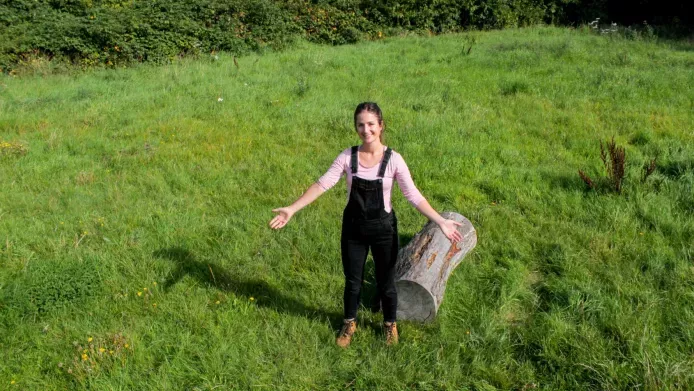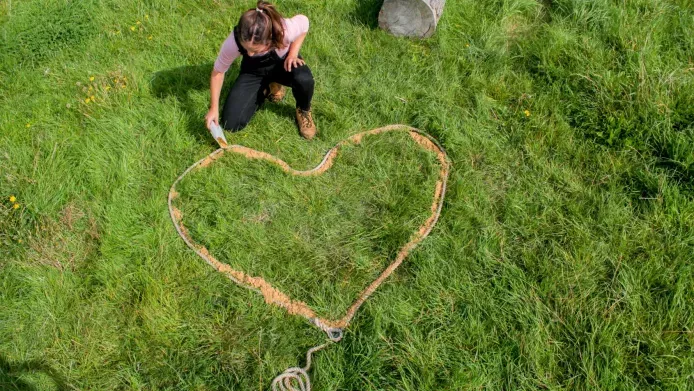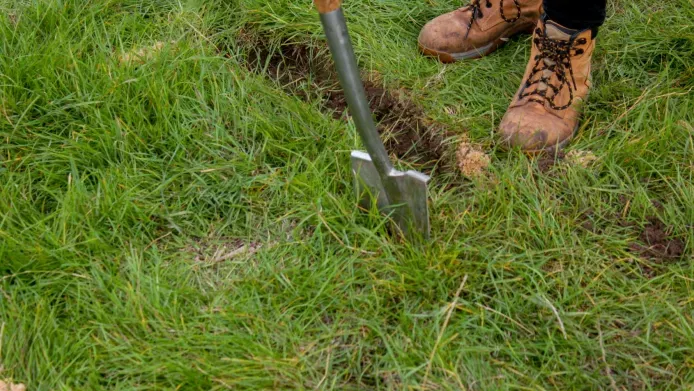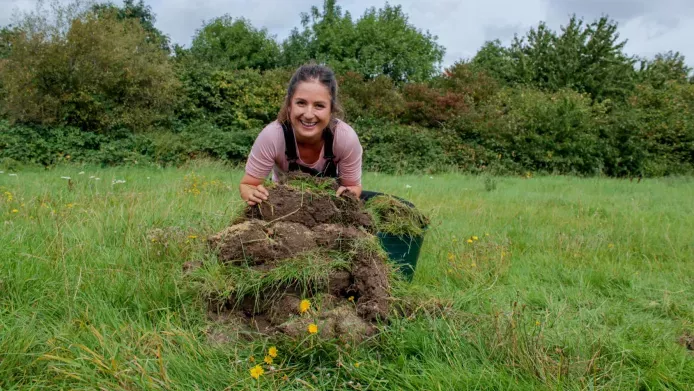Seven simple steps to make your own heart-shaped wildflower patch
Get creative and customise your wildflower patch into a unique shape!
The best time to create your patch is between March and May or in September or October – these are the optimum months for sowing seeds.
Safety first
Always wash your hands after handling soil, plants, and seeds. Wear protective footwear when digging.
1. Choose the right site
Wildflowers need plenty of light to grow, so make sure your site is well exposed and not under any trees or in the shade of buildings.

2. Create your shape
Use a piece of rope or old hosepipe to create the shape of your patch. Once you are happy with it you can trace around the shape with sand or chalk. This will give you a clear outline to work from.

3. Remove any turf or weeds
Wildflower seeds won’t grow if they are sown onto grass, as they require bare soil, so you need to remove any turf or weeds.
Use a small sharp spade to cut along the outline of your shape. Do this by pushing the spade into half its depth, take care to use the ball of your foot to help push the spade down. Then divide your shape into spade-width strips, cutting them out using the same method as before.
To lift the turf, slide your spade under the edge of a strip, lower the handle of your spade towards the ground and drive your spade forwards so it cuts the turf away from the ground. As you do this, roll the strip of turf back. Continue cutting and rolling until you can lift away the entire strip of turf. To make it easier you can cut the strips into smaller parts, so they aren’t as heavy to lift.
This can be tiring, so it’s a good idea to work with a friend or neighbour! You can also use specialist tools like a half moon lawn edger and a turf lifting iron which will make it easier, but don’t worry if you don’t have these, as a small sharp spade will do the job.

4. Compost your turf
Once you have your strips of turf, take them to a compost bay or a quiet part of your garden. Stack them on top of each other, ideally with the grass sides facing each other. Leave them to decompose into beautiful loam, which is an excellent growing medium.

5. Neaten your outline
You can make your shape really slick by using edging shears to trim the grass around the outline of your shape.

6. Create a seed bed
Fork over your bare soil, breaking up any large lumps, and take care to remove any stones, weeds, and grass roots. Once your soil is nice and crumbly, rake it over to create a level seed bed. Do this on a dry day, as if you work the soil when wet it can become compacted.

7. Sow your seeds
If you have time, wait two weeks between creating the patch and sowing your seeds. This way you can remove any weeds that have grown in that time, as they are competition to your wildflowers.
Scatter your Grow Wild seeds across the whole of the patch, and then rake them in gently. Be sure to water them in too.
Find out more about how to sow wildflower seeds on our info page.
If you don’t have any Grow Wild seeds, don’t worry. Find out how to source your own seeds.